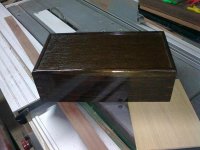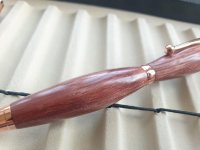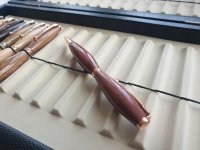Seb
Apprentice Member
Evening all
Every so often lately, and typically on the really dark woods, I get to the final stage of finishing and notice white marks within the grain of the pen. This is totally ruining the finish, and although I can cut them back and retry, it never quite sorts the problem.
My finishing routine hasnt changed at all. I sand up to 400 including with the grain with the lathe off, I then apply some sanding sealer and finish the sanding with micro mesh all the way to 12000. This always looks and feels great, I then apply a little yorkshire grit, which I tend to find makes the final finish of microcrystalline wax (Hampshire Sheen) look better. I apply this with regular kitchen roll. There are no signs of white marks until I put the microcrystalline on, and I'm wondering if it's the consistency of it along with certain types of kitchen roll making it get stuck in the small open grain.
Any advice would be appreciated. I'm building up the courage to start with the Melamine Lacquer finish, so hopefully this wont be an issue once I get going with that (I've posted a query in the melamine post sticky at the top of the forum). I've included a pic of a problem pen I did tonight, and one I did last night without the issue. Both had the same finish routine.
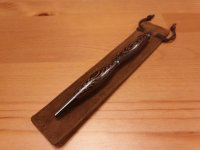
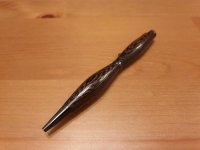
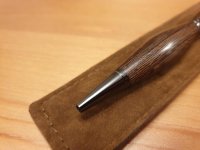
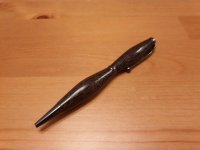
Last nights, with no problem.
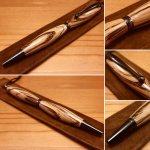
Every so often lately, and typically on the really dark woods, I get to the final stage of finishing and notice white marks within the grain of the pen. This is totally ruining the finish, and although I can cut them back and retry, it never quite sorts the problem.
My finishing routine hasnt changed at all. I sand up to 400 including with the grain with the lathe off, I then apply some sanding sealer and finish the sanding with micro mesh all the way to 12000. This always looks and feels great, I then apply a little yorkshire grit, which I tend to find makes the final finish of microcrystalline wax (Hampshire Sheen) look better. I apply this with regular kitchen roll. There are no signs of white marks until I put the microcrystalline on, and I'm wondering if it's the consistency of it along with certain types of kitchen roll making it get stuck in the small open grain.
Any advice would be appreciated. I'm building up the courage to start with the Melamine Lacquer finish, so hopefully this wont be an issue once I get going with that (I've posted a query in the melamine post sticky at the top of the forum). I've included a pic of a problem pen I did tonight, and one I did last night without the issue. Both had the same finish routine.




Last nights, with no problem.





